Pearls are a marvel of our world, and are coveted by the jewelry industry. And as the only gemstone that comes from a living creature, that’s no surprise! Reknowned for their elegant luster, rich variety of sizes and shapes, and versatile style, pearls have become a classic gem.
But where do pearls come from, and when did they get so popular? Unlike other gemstones that are mined from the earth, pearls are formed within mollusks through a fascinating biological process. This natural reaction occurs as a protective mechanism against irritants, giving them the apt name “gems of the sea.” Keep reading to learn more about the formation process, the different types of pearls, and where these stunning gems originate from.

Since the moment that humans first discovered pearls, these radiant aquatic gems have been revered. Unlike other jewels formed from precious metals and gems typically found in the earth, natural pearls are created by living creatures. Wild pearls are incredibly rare, so they have historically been highly valuable and sought after. Known as the “Queen of Gems,” pearls were once reserved for only the highest societal ranks, such as royalty or nobility.
Pearls were so valuable, in fact, that during the Roman Empire the Roman general Vitellius financed an entire military campaign by selling just one of his mother’s pearl earrings. And pearls play a part in history around the world, too. A Hindu tale from India tells of the god Krishna plucking a pearl from the sea and presenting it to his daughter on her wedding day. And even Cleopatra of Egypt once famously crushed a pearl into wine to prove Egypt’s wealth and heritage.

Across the world, from Panama to Bahrain to China, different types of pearls were discovered. The mad dash to collect these rare gems began! A new industry was formed, and the demand for pearls only grew over the millenium. However, the supply of natural pearls neared depletion in the 1800s, thanks to over-fishing, pollution, and the ferocious demand of globalization.

It wasn’t until the early 20th century in Japan that the process of culturing pearls was discovered, refined, and patented. It was this shift that truly made the pearl industry explode, and has allowed pearls to become the bastion of style they are today.
To understand how Kokichi Mikimoto created a boom in the pearl industry through cultivation, it’s first important to understand how pearls are formed.
For all their elegance and beauty, the truth is that pearls are formed in an unlikely underwater setting: within an oyster or mussel. When a foreign substance, such as a food fragment or grain of sand, enters the mollusk, it triggers the oyster’s natural reaction to protect itself by covering the irritant with layers of nacre. Nacre is the luminous material that gives pearls their luster, but it’s also a defence mechanism! Over time, nacre layers will build up within the shell, creating a beautiful pearl. This is the real beginning of answering where do pearls come from!
It’s a simple process, but there are many variables that can affect the final pearl. The type of mollusk, the size and shape of the irritant, and the body of water will all impact the color, shape, and size of the pearl.
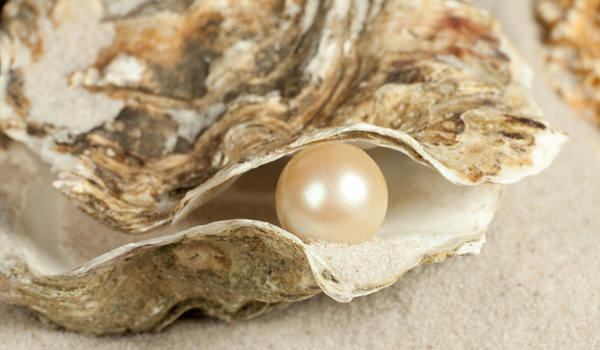
The process of producing a pearl does not happen overnight — in fact, it can take up to several years. During the early stage of pearl formation, the irritant becomes the nucleus of the pearl as the mollusk begins to coat it with nacre. Small saltwater pearls can form in as little as six months, but the larger ones may take several years. In general, freshwater pearls form a lot faster than the saltwater ones. It’s also worth noting that prior to producing a pearl, a mollusk needs to mature in order to begin the pearl making process.
When looking at where pearls come from, it can be easy to get confused between natural and cultured pearls. While they’re both absolutely authentic, the difference lies in how they were created, and whether human intervention was involved. Natural pearls form without any human intervention, occurring naturally in the wild. All of the historical pearls mentioned earlier were natural, as pearl cultivation didn’t take off until the early 1900s.
All pearls formed within an oyster or mussel are natural, but the term ‘natural pearl‘ specifically refers to those created without any human interference. These pearls are incredibly rare, forming as a response to irritants inside the mollusk. In the wild, only one out of 10,000 mollusks will produce a pearl. In addition, so many wild mollusks have been collected throughout history that the population has dwindled significantly. These days, there aren’t many natural pearls on the market, and they can fetch extremely high prices.
In contrast, cultured pearls make up nearly all of the pearls on the market today. The main difference is that cultured pearls are formed when small irritants are manually introduced to the mollusk. This usually happens on a pearl farm. These irritants are placed into the mantle tissue, where they stimulate the creation of pearls. Natural pearls and cultured pearls are indistinguishable from each other, and have revolutionized the pearl industry.
PEARL FACT: In 1907, a patent was granted in Japan for a grafting needle that could insert a nucleus into an oyster, thus trigerring the formation of a pearl. This is known as the Mise-Nishikawa method, and is still the basis of the modern cultured pearl industry.
Pearls produced by oysters come in various types, each with unique characteristics and origins. In fact, there are five main types of pearls, found in different bodies of water all over the world. But where do pearls come from? Here are the different types of pearls, a breakdown of their unique characteristics, and an introduction to their history of cultivation.
Origin: Lakes and rivers in China
Mollusk: Hyriopsis cumingi (triangle shell), Hyriopsis schlegeli (Biwa shell), and other freshwater clams & mussels
Key factors: Harvested during the calm spring and autumn seasons
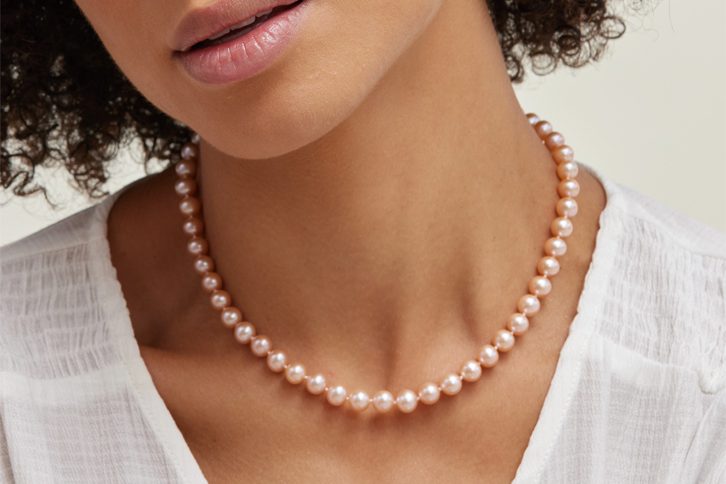
Found in the freshwater rivers, creeks and lakes of China. These pearls are available in a wide range of colors, shapes, and sizes. They can naturally be produced in pastel shades of pink, lavender, and peach, and are also often dyed brighter colors. Freshwater pearl sizes typically range from 5mm to 10mm, though they are often available in larger sizes up to 13mm.
A type of freshwater pearls, called mabé, have been cultured in China for centuries. While not considered true pearls, a metal form was inserted into the inner shell of a mussel, and then left in freshwater for a few years. Nacre would form over the mold, creating a pearlescent figure, often in the shape of Buddha.
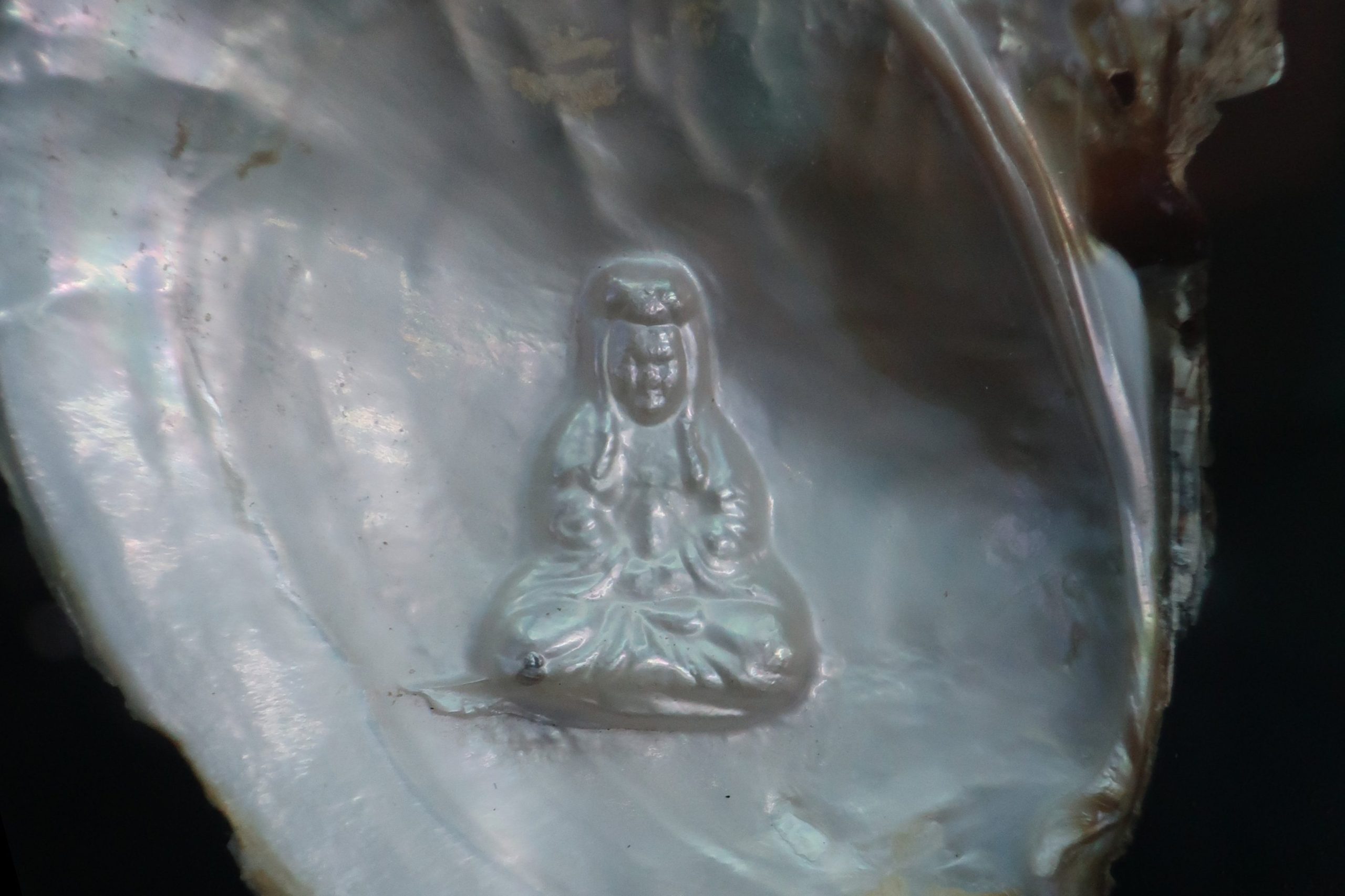
The first round freshwater pearls were cultured in Lake Biwa, Japan, in the 1930s. These all-nacre pearls (no nucleus) pearls created colors that had never been seen in saltwater pearls, and kicked off a demand for their luminous and lustrous appearance. However, pressure on Lake Biwa from industry, pollution, farming, and resorts put a strain on Japan’s Biwa pearl industry.
To compete, China, with it’s large freshwater river systems and workforce, decided to enter the cultured freshwater pearl market. While their first rounds of pearl production — dubbed “Rice Krispies” for their small size and crinkled texture — were not highly lauded, China soon improved their techniques and become a pillar for cultured freshwater pearls.
These days, many cultured freshwater pearls have the shape, size, and surface quality that surpasses natural Akoya pearls, at nearly half the cost. As a result, cultured freshwater pearls have become a staple in the pearl industry, and have made pearl jewelry accessible to more people than ever before.
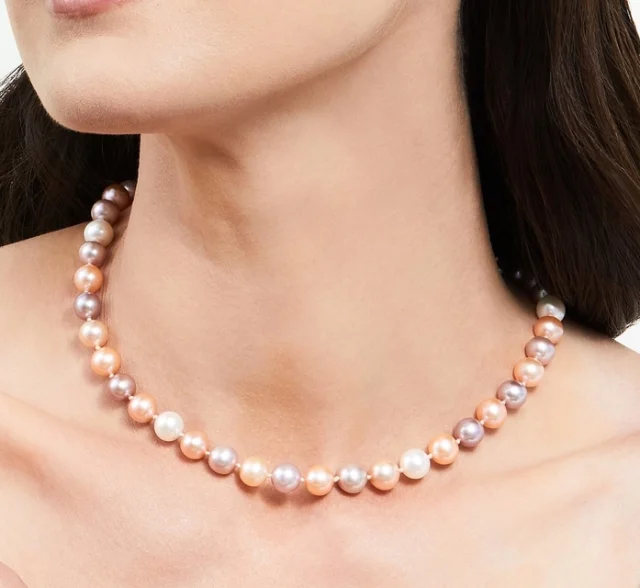
Given advancements in the pearl cultivation process, many now consider cultured freshwater pearls to be a the superior choice for surface quality, luster, and stunning color.
Explore freshwater pearl jewelry from The Pearl Source, and make these stunning gems a part of your signature style!
Origin: Coastal seas of Japan and China
Mollusk: Pinctada Fucata oyster
Key factors: Found in colder waters

When you think of pearls, you likely picture Akoya pearls. These classic white, round pearls are very lustrous, and have become a staple of the jewelry industry. While originally from Japan, Akoya oysters are cultivated in Japan, China, and to a lesser extent, Vietnam, Thailand and Australia. Akoya pearls are are commonly found in sizes ranging from 2mm to 10mm.
Akoya pearls were the first type of pearls to be cultivated. In the early 1900s in Japan, Kokichi Mikimoto — of legendary Mikimoto Pearls — was finally successful in his pearl cultivation experimentation. Around the same time, however, two other Japenese men had also both successfully nucleated an Akoya pearl. These men were a government biologist, Tokichi Nishikawa, and a carpenter, Tatsuhei Mise. When they realized they couldn’t have competing patents, they combined forces to create Nishikawa-Mise method.
On a mission to cultivate the most perfect pearls possible, Mikimoto added an extra step of his own to this method to successfully cultivate round Akoya pearls. This patent to this modified technique was granted to Mikimoto in 1916 and the Mikimoto Pearl Company was formed. Now, the dazzling beauty of cultured pearls could be introduced to the rest of the world through stunning cultured pearl jewelry.
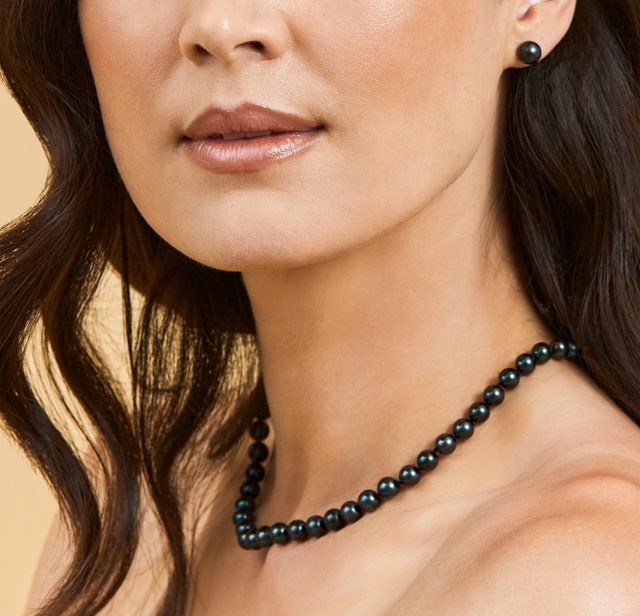
With their round shape and classic style, Akoya pearls will add a touch of sophistication to any look. From simple strand necklaces to ornate rings, discover the world of cultured Akoya pearls from The Pearl Source.
Origin: Mainly in the waters of Tahiti, and some other French Polynesian islands
Mollusk: Pinctada Margaritifera (Black Lip) oyster
Key factors: Found in warm waters
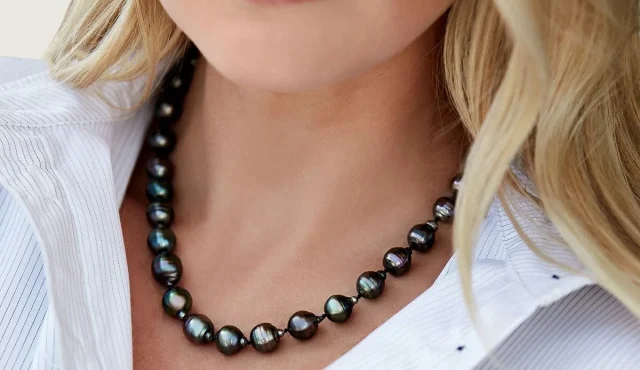
Also known as black South Sea pearls or simply black pearls, Tahitian pearls are revered for their unique dark color and dazzling overtones. They are almost always sold in their natural color and receive no treatment other than washing and buffing. They average 9-13mm in size.
The dazzling black pearls have been revered by Polynesians for centuries. They were even considered a gift from the god of love and fertility! And when French colonizers arrived in the 1600s, they, too, fell for the unique charms of Tahitian pearls.
The French began to harvest as many black pearls as possible to send back to Europe, which quickly decimated the population of natural wild pearls across Polynesia. By 1880 the Tahitian pearl was almost driven to extinction, so a ban on harvesting these unique ocean gems was declared.
It was only in the 1960s — when the success of Akoya pearl cultivation techniques made it to the region — that modern Tahitian pearl cultivation began. Since then, pearl-lovers worldwide have been able to enjoy the mysterious beauty and unique luster of these prized pearls. Half a century later, and cultured Tahitian pearls now make up about 20% of the global pearl market!
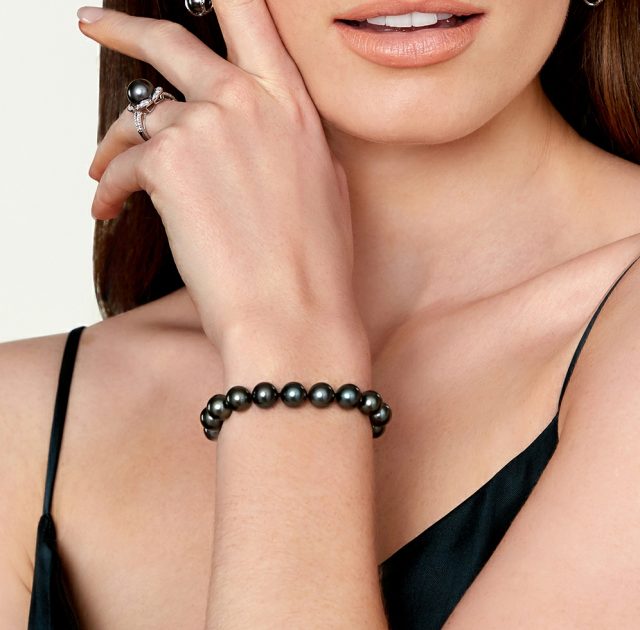
Tahitian pearls have an unmistakable dark color, with an array of luxurious overtones such as peacock, aubergine, blue-green, and cherry.
Discover their unqieu beauty for yourself with stylish black Tahitian pearl pieces from The Pearl Source.
Origin: Northern coast of Australia
Mollusk: Pinctada maxima (Gold & Silver-lipped) oyster
Key factors: Found in warm, tropical waters
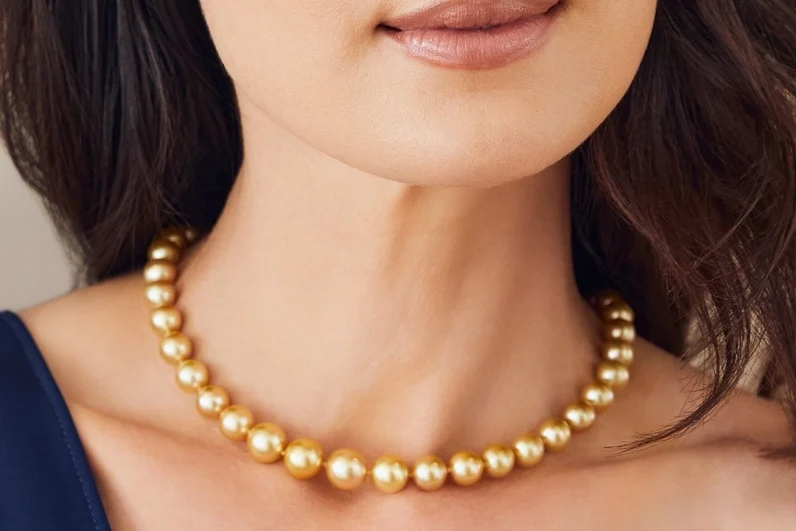
South Sea pearls are the largest in the world, and these rare gems are adored for their radiant colors. They tend to have the thickest layer of nacre of any pearl type, which makes them appear more satiny than other pearl types. They come in beautiful shades of gold and white, and average 9-15 mm.
South Sea pearls, with their gleaming white and golden overtones, were adored by both indigenous populations in Australia and British colonists. These large gems, like many other types of pearls around the world, were keenly harvested, leading to a diminished wild population.
Thankfully, before they could go extinct, the first cultured pearl farms were opened in Kuri Bay in north-western Australia in 1956. The famed Paspaley Pearl Company was opened a few years later, and since then South Sea pearls have retained their status as the most sought after and luxurious cultured pearls on the market.
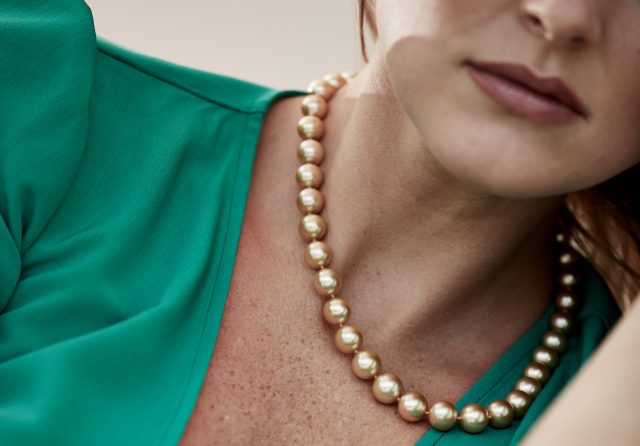
The gleaming tones of Golden South Sea pearls are in a league of their own, so it’s no wonder that these gems of the sea have become a symbol of style and taste.
From radiant necklaces to buttery bracelets, The Pearl Source creates timeless Golden South Sea Pearl pieces. Discover your modern heirlooms.
Real pearls are formed inside mollusks—typically oysters or mussels—as a natural defense against irritants. They can be found in both saltwater and freshwater environments around the world, including Japan, China, French Polynesia, Australia, and the Philippines.
Natural pearls form without any human intervention, while cultured pearls are created when a small irritant is manually inserted into the mollusk to stimulate nacre production. Both are real pearls, but natural pearls are significantly rarer.
Pearl formation can take anywhere from 6 months to several years, depending on the type of mollusk and environmental conditions. Larger pearls typically require more time to develop thick layers of nacre.
Yes, cultured pearls are 100% real. They are formed by living mollusks and made of the same iridescent nacre as natural pearls—the only difference is that the process begins with human intervention.
South Sea pearls, particularly Golden South Sea and White South Sea varieties, are among the most valuable due to their large size, thick nacre, and satiny luster. Natural pearls also command high prices due to their extreme rarity.
From their underwater origins to their place in fine jewelry, pearls are a true marvel of nature—and of human craftsmanship. Whether formed by chance in the wild or cultivated with care on pearl farms, each pearl reflects a delicate balance of biology, tradition, and artistry.
Once harvested, these gems are cleaned, polished, and thoughtfully sorted to highlight their individual beauty. Master jewelers and pearl experts evaluate each one by its luster, shape, surface quality, and color, ensuring that only the finest pearls make their way into your jewelry box.
Today, the pearl’s timeless elegance lives on—not only in classic strand necklaces, but in modern designs that celebrate their organic charm. From the subtle glow of Akoya pearls to the bold beauty of Tahitian and South Sea varieties, these ocean-born treasures continue to captivate, connect, and inspire.
Signup now and receive an email once I publish new content.